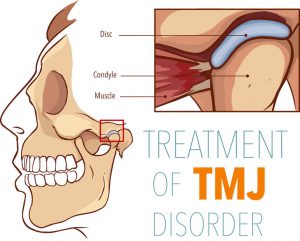
The acronym “TMJ” stands for the temporomandibular joint, the hinge-like joint that connects the jawbone and the skull at each side of the head. TMJ disorders (also called TMD) can be caused by many things and they can also cause symptoms of varying severity – in some cases, the problem resolves on its own, but in others, it needs treatment. The specialists to turn to with TMJ problems are dentists and oral surgeons – here are more details about the affection.
The Causes of TMJ Disorders
TMJ can be caused by many things, including genetic predisposition, injuries sustained by the teeth and the jaw, teeth grinding and jaw clenching (a syndrome called bruxism), a misalignment of the jaw or of the teeth that affects the correct position of the temporomandibular joint, arthritis that affects the joints of the head, poor posture, even stress. The wide range of factors and causes that can lead to the appearance of TMJ disorders makes the condition very difficult to track back, therefore the specialists usually focus more on the treatment of the symptoms.
The Symptoms of TMJ Disorders
The symptoms of TMD are as varied as the causes – here are the most common ones:
- Pain in the jaw – sharp and diffuse pain are equally common;
- Clicking and popping experienced at the level of the jaw;
- Earaches and headaches;
- Jaw muscles that feel stiff or painful;
- The locking of the jaw.
The Treatment of TMJ Disorders at Home
In many cases, TMD can be efficiently treated with home remedies, such as ice packs and over the counter anti-inflammatory medication. Gentle massages and attempts to stretch the jaw muscles can also have beneficial effects and reducing the amount of stress that the TMD sufferer is exposed to is known to have beneficial effects as well.
The Treatment of TMJ by Doctors
If home remedies seem ineffective (the symptoms are not ameliorated after a few days of applying ice packs and taking OTC painkillers), medical treatment for the disorder is necessary. The oral surgeon Skokie doctor will inquire about the type and the severity of the symptoms and might also order further tests, such as a CT scan, an X-ray of the jaw, an arthroscopy or an MRI of the affected area. When all the data are collected, the doctor will select the adequate treatment method. The options include the application of dental splints (medical devices used for protecting the teeth from the damage caused by bruxism), the administration of Botox to destress the nerves, the muscles and the joints in the affected area, physical therapy and, in the most severe cases, surgical interventions. The surgical methods used for treating TMD are usually minimally invasive interventions, such as the irrigation of the affected joint to help reduce the inflammation. In some cases, when jaw locking is also involved, surgery on the mandible or open-joint surgery might be necessary to repair the affected joint.
The prognosis for TMD is usually very good – even the most severe cases can be treated efficiently, with the patient experiencing an amelioration of the symptoms very soon.
